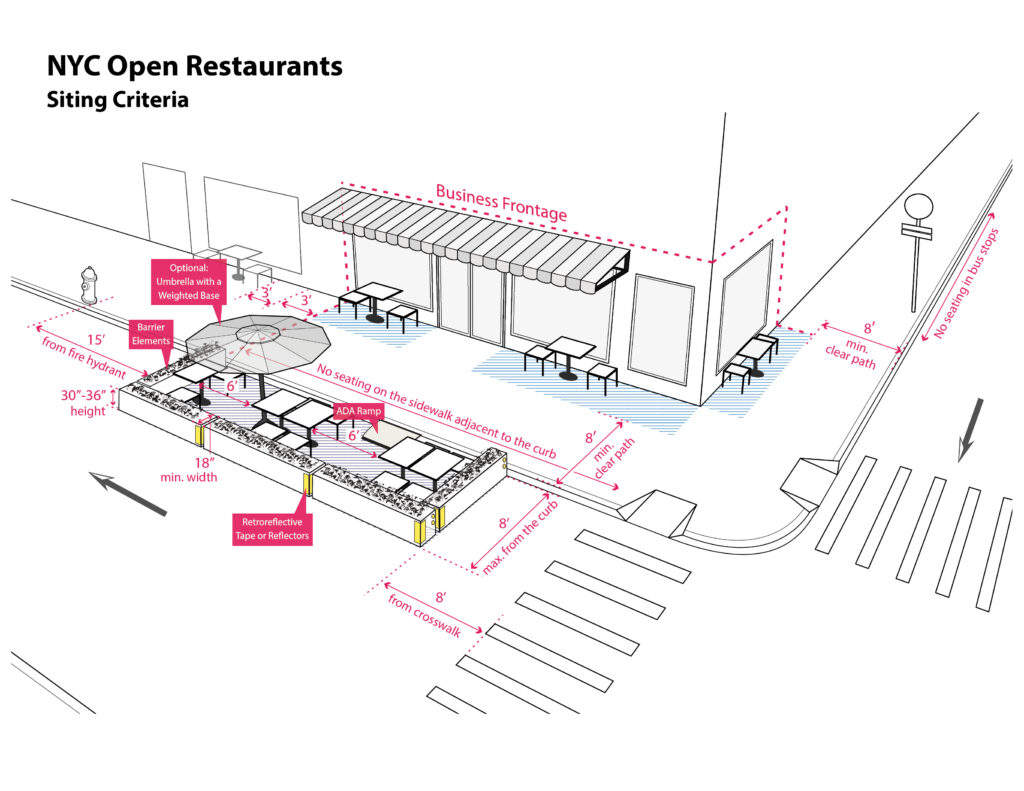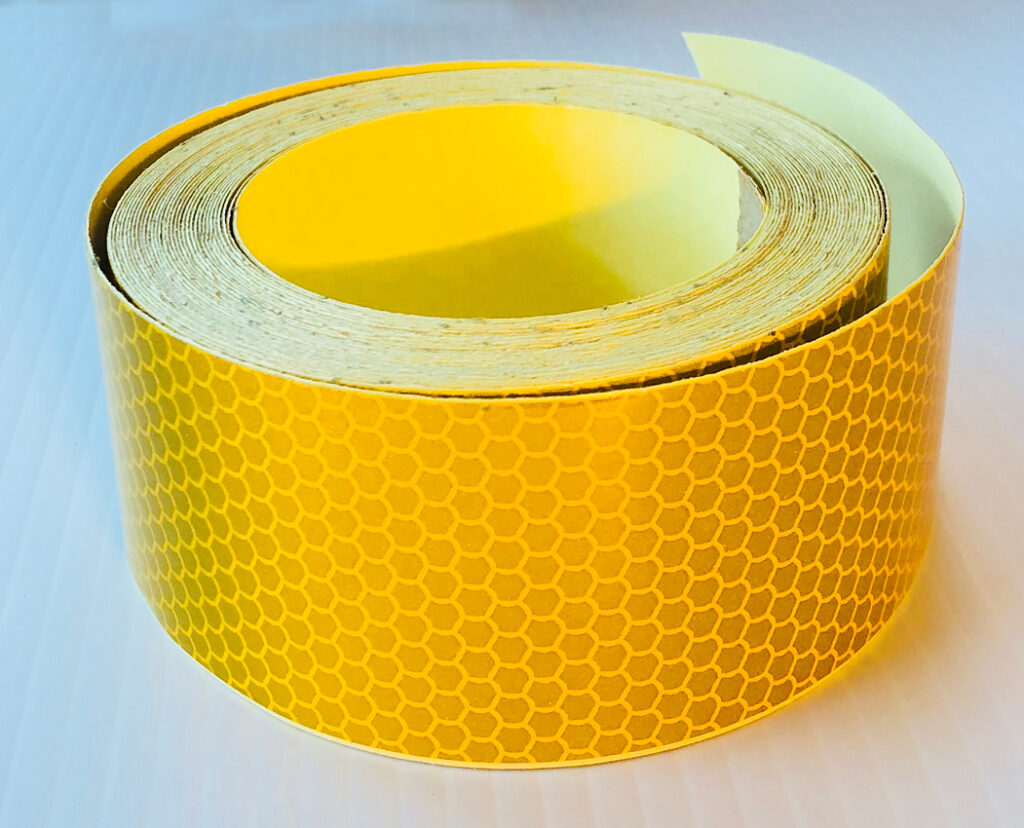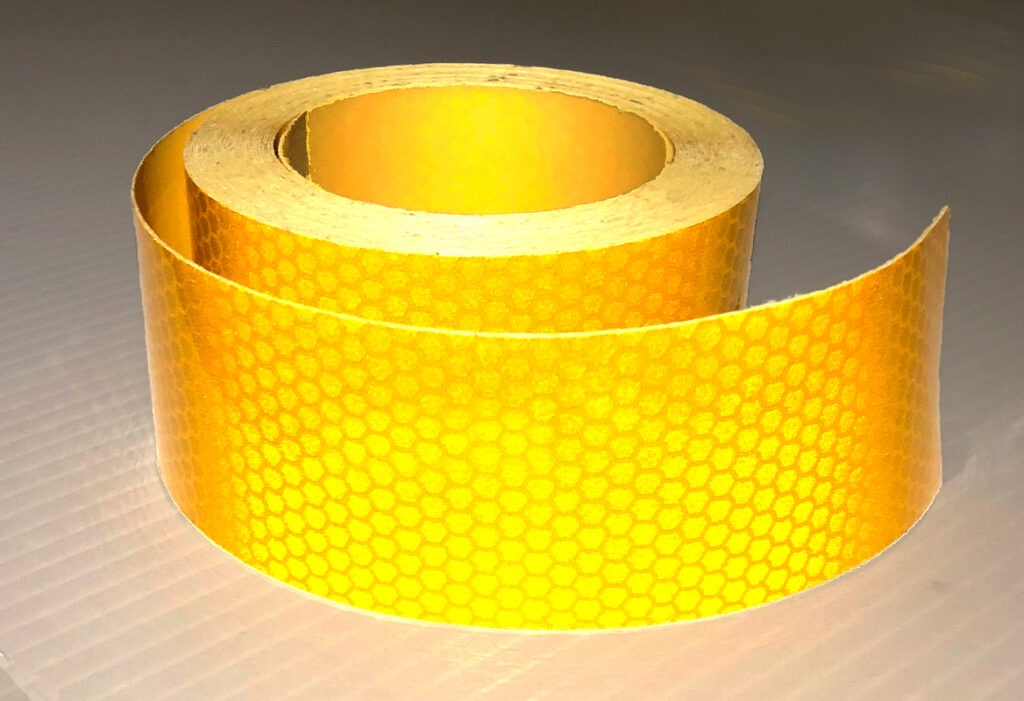Reflective Tape for New York Restaurants – (www.tapedealer.com)
In an effort to slow the spread of COVID 19, many cities have implemented regulations designed to allow people to distance themselves from each other while at the same time continue to carry out their normal day to day activities. One of these activities is dining out. To lower customer density and allow for distancing, many cities have allowed sidewalk and street seating for restaurants. New York City is one municipality that has implemented this strategy. Seating people near existing traffic has its own inherent dangers which must be offset so that the solution does not cause more problems than it solves. One of thee challenges is visibility. That is, traffic being able to clearly see the customers and the barriers that protect them.
As you can see from the picture below, barriers are used to protect clientele. To enhance the visibility of barriers, NYC is requiring that Yellow High Intensity Reflective Tape be used to mark barricades. ReflectivePro.com sells short rolls of flexible Yellow High Intensity tape that is –
- Flexible so it will wrap around 90 degree corners,
- Bright and Highly Reflective
- Self-adhesive to plastic and other surfaces
- Outdoor Durable
- Certified ASTM D-4956 Type 3 Tape
Application for this tape is a Simple peel and stick process. It is dot rated as a type 3 reflective film. commonly used to mark barricades, road barrels and traffic cones.
The actual regulation is outlined below.

Sidewalk Seating
- Seating and tables must be up against the wall of the business or as close as possible
- Sidewalk seating area may not exceed business frontage
- Must leave an 8′ clear path for pedestrians
- Must be at least 3′ from the adjacent business
- Cannot block subway grate, utility hardware or Siamese water connection
- Cannot block bus stop waiting area
- For clear path purposes, parking meters, traffic signs and tree pits with flush gratings (without tree guards) are exempt. All other above-grade structures are considered obstructions
- Tables and chairs must be provided by applicant
Roadway Seating
Restaurants must:
- Create a protective barrier, such as planters or objects of similar size and weight, on all three sides of the seating perimeter that are in the roadway, to separate seating from the travel lane. Such barriers must be at least 18” in width and 30-36” in height (excluding plantings) on all three sides that are in the roadway, to preserve visibility for motorists and provide protection for patrons (see Siting Criteria diagram)
- Place such barriers directly adjacent to each other (no gaps) and no more than 8’ from the curb (see Siting Criteria diagram)
- Roadway seating may not exceed the length of business frontage
- ———————————————————————————-
- Ensure visibility of patrons and barriers at night by clearly marking all barriers with yellow high intensity retro-reflective tape or reflectors (see Siting Criteria diagram)
- ———————————————————————————–
- Provide a ramp for ADA compliance, which can be made of non-permanent materials
- Not place seating or barriers within 15’ of a fire hydrant. Doing so jeopardizes fire safety for your fellow New Yorkers
- Not place seating or barriers within 8’ of a crosswalk, to provide for safe vehicle turns and avoid crowding
- Not provide any lighting that is blinding to passing traffic
- Not place seating within a No Stopping Anytime or No Standing Anytime zone, bike lane, bus lane/stop, taxi stand, or Car Share space
[Exception: For part-time No Stopping or No Standing zones, seating may be placed when those rules are not in effect. Barriers and seating must be removed from the roadway when No Stopping or No Standing is in effect] - Only utilize umbrellas with a weighted base or tents or other shelters, not to exceed 400 SF (square feet) in total or fully enclose the seating area, which follow manufacturers installation instructions to secure the tents properly and safely. Areas of multiple tents that are combined or are tied to each other cannot exceed 400 SF in total. All such umbrellas and tents may not extend past the barrier, obstruct access to or ventilation of utility covers, or obstruct clear paths. Umbrellas and tents should not be used during inclement weather such as high wind condition.
- Tables, chairs, and barriers must be provided by applicant
- Remove tables and chairs or secure them in place when not in operation
- Comply with NYC Fire Department Open Flame and other applicable Fire Codes
Restaurant owners may:
- Leave barriers in place within a metered zone, alternate side parking, or No Parking Anytime zone, provided that that tables and chairs are removed or secured when not in operation
- Where seating is authorized along a curb, install a platform behind the required barrier to flush height with curb to facilitate ADA compliance, prevent the curb from becoming a tripping hazard, and allow drainage to underpass seating
- Such platforms shall not block rain water drainage getting to the curb or flowing along the curb
- Such platforms shall not obstruct access to or ventilation of utility covers.


This article is provided as a service by Reflective Inc. – Written by Steven Cole. If you have any questions about reflective tape and its ability to keep people and property safe, please feel free to contact me.